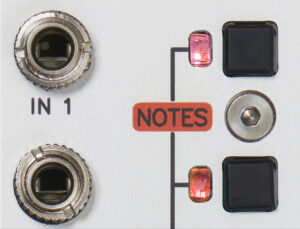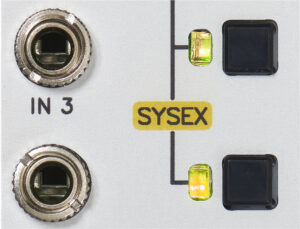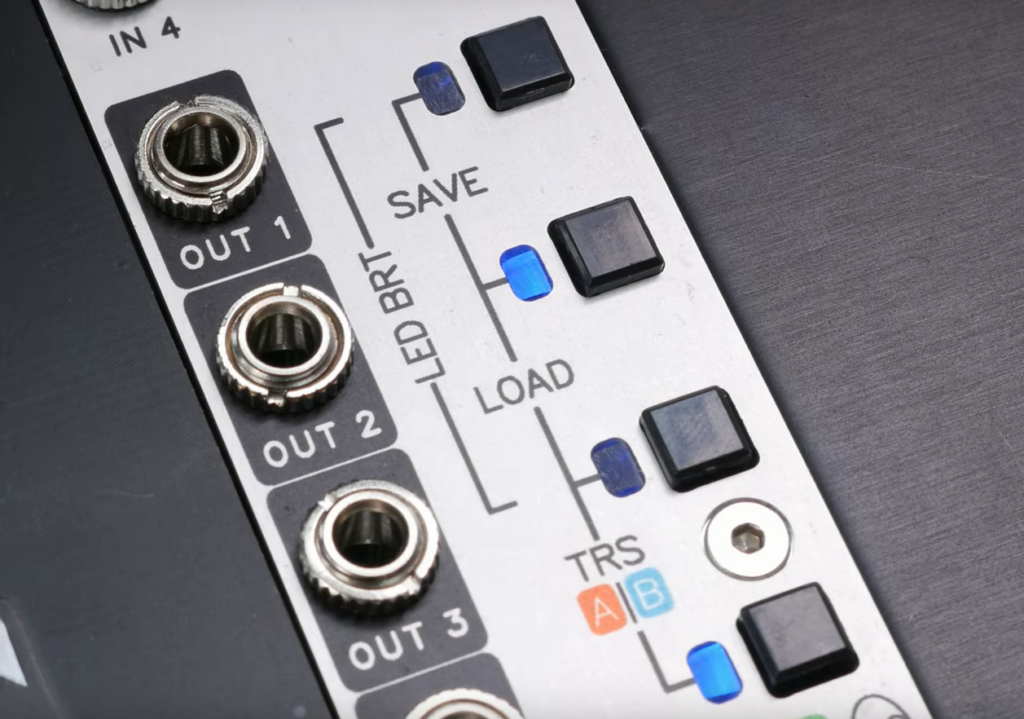Description
Routes and merges midi data, four midi inputs and outputs
- 4x TRS MIDI inputs, 4x TRS MIDI outputs
- Can route, split and merge MIDI streams
- Independent MIDI flow settings for notes/CC (red), clock (blue) and sysex (yellow)
- Easy to use user interface, quickly change routes, color coded routes and events.
- MIDI event monitor with color coding for various message types
- Save and recall up to 8 routing settings
- Automatically accepts both TRS A and TRS B at the inputs
- Outputs individually selectable between TRS A and TRS B
- Convert between TRS A and TRS B
- Save detach: Will send note off messages if a connection is detached
- Auto-restarter: Will send re-sync new clock connections automatically
- Sysex Buffer: Buffers Sysex messages if necessary in order to merge them
- Adjustable LED brightness
- works perfectly in combination with USB-Bridge A
- Full galvanic separation of inputs – no ground loops.
- Firmware update via midi Sysex
Merging and routing
Each of the MIDI inputs can be connected to one or more of the MIDI outputs. Similarly each of the MIDI outputs can receive MIDI data from one or multiple inputs.
TRS Bridge can set these routes in a simple modes for all types of MIDI messages, but it is also possible to route different kinds of messages differently:
Note and controller data
These are all the midi messages that can be merged without any issues. If two devices send midi at the same time, data will be interleaved and sent to the receiving device.
Clock Data
Clock data can not be merged, only one midi clock stream can be used at a time. When changing the routing, TRS Bridge makes sure that each output only receives clock from a single input.
Sysex data
Sysex data is even trickier to handle than clock data, because sysex messages can have an arbitrary length. if multiple sysex streams are received simultaneously, USB bridge A buffers the data and will forward it to the receiver as soon as possible. This way sysex messages are merged as well.
Auto-restarter
normally result in an out of phase clock. This is because the receiving MIDI device did not
receive a Midi-Start message. Or maybe it did receive a Start message at an earlier time,
but the clock is now out of sync.
To mitigate this, TRS-Bridge automatically detects such a situation and re-syncs the output
clock:
When a new clock connection is made, TRS-Bridge waits until the end of the current bar,
then sends a Midi-Stop and Midi-Start message to restart the MIDI device. Clock routing
then continues normally.
While waiting for the current bar to finish, no clock messages are sent. This is to make
sure the clock is always in sync and avoids issues with multiple clock domains.This can also be used to start and stop external gear in sync to create an arrangement – perfect for live situations.
Low latency
TRS Bridge has an extremely low latency between input and output:
- End of received message to start of output message: 30µS
- Clock latency edge to edge 250µS (220µS clock message length + 30µS latency)
Technical specs
- Printed aluminum front panel, 2mm thickness
- Voltage supply 12V
- Supply current: +12V: 50mA , -12V: 0mA
- Dimensions: 3HE, 6HP, 128.5mm x 30mm
- 25mm total height, Depth behind panel: 21mm (including power connector)
- Weight: 63g
Firmware Updates
Firmware updates are possible via MIDI sysex
Currently there is no firmware for dowload.







